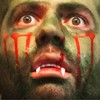

1 The Manara Library Vol. 1 by Milo Manara with Hugo Pratt, published by Dark Horse
2 The Incal by Moebius and Alejandro Jodorowsky published by Humanoids
3 Popeye Vol. 5: Wha's A Jeep by E.C. Segar published by Fantagraphics
4 Donald Duck: Lost in the Andes by Carl Barks published by Fantagraphics
5 The Blobby Boys #1 by Alex Schubert published by Team Fortress
6 Kramer's Ergot 9 Edited by Sammy Harkham, published by PictureBox Prison Pit Book 3
7 Gangsta Rap Posse #2 by Benjamin Marra, published by Traditional Comics
8 Black Mass #5 and #6 by Patrick Kyle
9 Thickness #1 and #2 edited by Ryan Sands and Michael Deforge
10 Paying For It by Chester Brown published by Drawn & Quarterly
Advertisement

1 Pandora's Eyes by Milo Manara and Vincenzo Cerami, published by Humanoids
2 Lizz Hickey's various mini comics
3 All of Fantagrahics reprint books especially Pogo, Peanuts, and Prince Valiant
4 Big Questions by Anders Nilsen published by Drawn & Quarterly
In other news I saw the new Tintin movie and it was some total dogshit but not in the way I thought it was going to be.

Advertisement

Advertisement

Advertisement


This is actually the sixth time that Tin Tin's been made into a movie. The earlier films are all on YouTube. For a much more charming take on Tin Tin, take a look at this French black and white stop motion film adaptation of the Crab With The Golden Claws from 1947.
Advertisement
Here's the second live action movie, The Blue Oranges.
The fourth Tin Tin movie was an animated feature based on the Temple of the Sun.
The fifth was another animated film, this time from an original script that was later turned into a comic. Most Tin Tin fans don't really acknowledge that book as part of the series though.
And finally here we are at our modern Tin Tin. This clip shows Peter Jackson dressed as Captain Haddock, which is pretty rad. The rest, not so much.
See You Next Week,
NicholasPreviously – Comic Book Love-In 44
